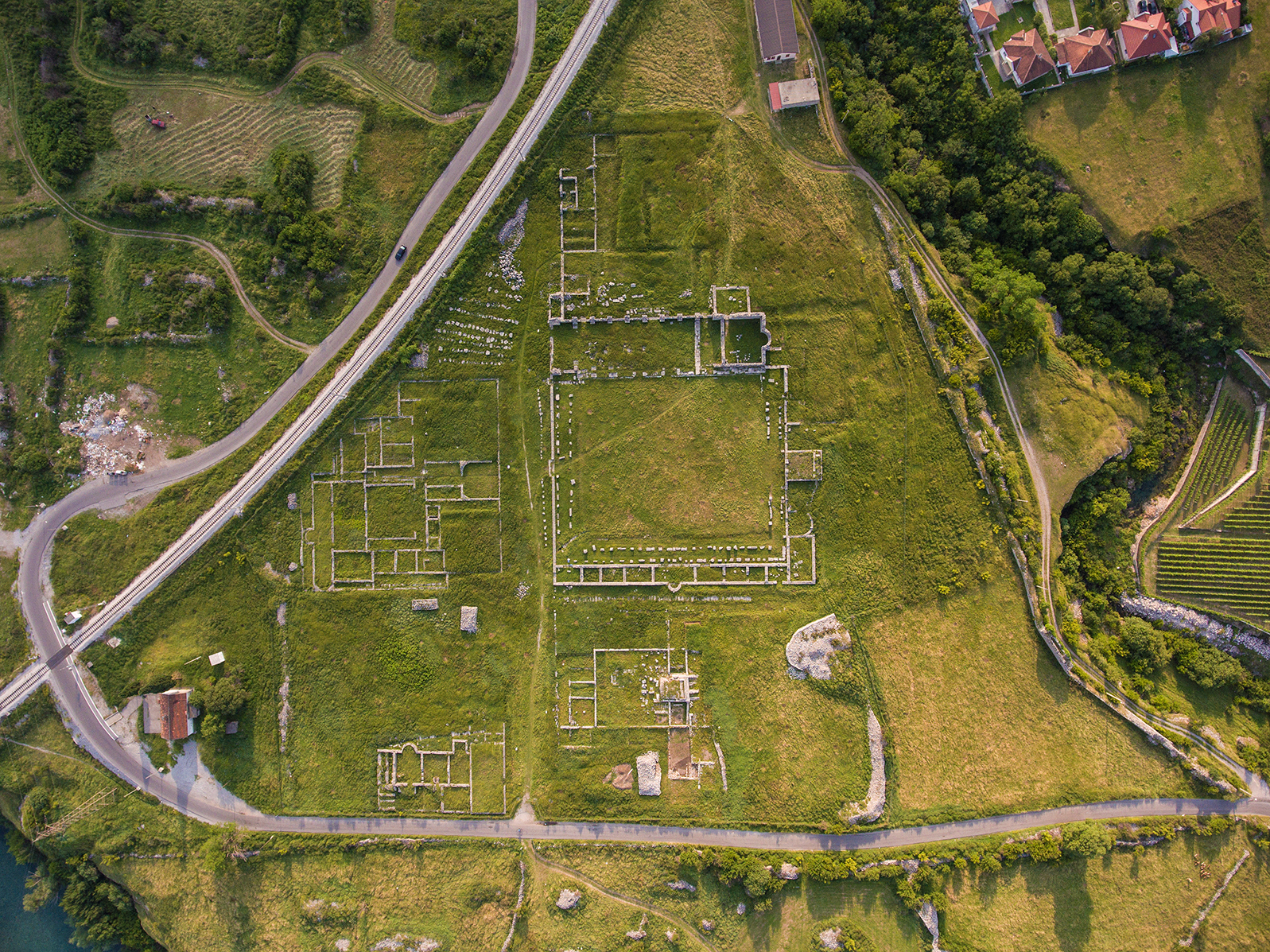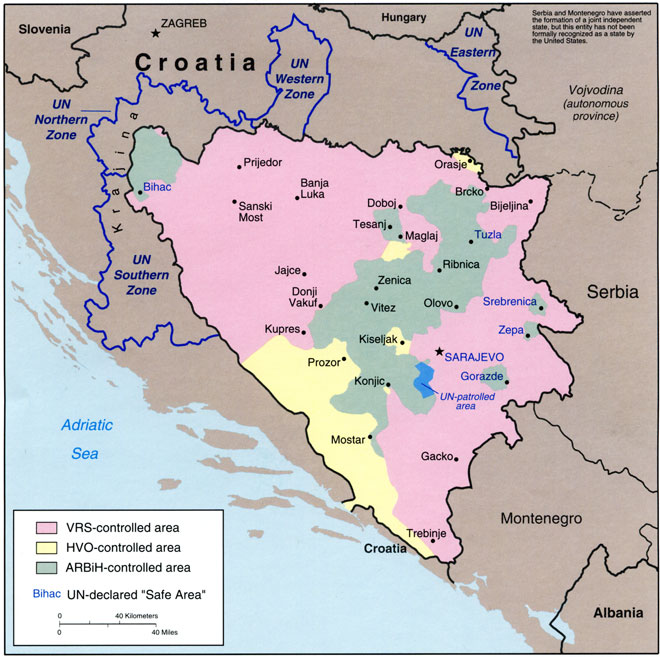|
Croatia–Montenegro Relations
Foreign relations between Croatia and Montenegro are bound together by shared history, intellectual development, and common geography. Both states are members of the Council of Europe. Montenegro has been a candidate to join the European Union since 2012, a pursuit supported by Croatia, who has been an EU member since 2013. Their diplomatic relations have been largely amicable, with strong economic collaboration. Croatia and Montenegro are military allies through NATO. Limited regional geopolitical issues remain, with Montenegro's historic ties to Serbia complicating bilateral relations with Croatia. History In late 2002, Croatia and Serbia and Montenegro adopted an interim agreement to settle the disputed Prevlaka peninsula at the entrance of the Bay of Kotor in Croatia's favour, allowing the withdrawal of the UN monitoring mission. This agreement has applied to Montenegro since its independence, who agreed to settle future possible disputes in the International Court of Ju ... [...More Info...] [...Related Items...] OR: [Wikipedia] [Google] [Baidu] |
Podgorica
Podgorica ( cnr-Cyrl, Подгорица; ) is the Capital city, capital and List of cities and towns in Montenegro, largest city of Montenegro. The city is just north of Lake Skadar and close to coastal destinations on the Adriatic Sea. Historically, it was Podgorica's position at the confluence of the Ribnica (Morača), Ribnica and Morača River, Morača rivers and at the meeting-point of the fertile Zeta Plain and Bjelopavlići Valley that encouraged settlement. The surrounding landscape is predominantly mountainous terrain. After World War II, Podgorica was first designated as the capital of Montenegro in 1946. At that time, it was renamed Titograd in honor of Josip Broz Tito, the leader of Yugoslavia. It served as the capital of the Socialist Republic of Montenegro within the Socialist Federal Republic of Yugoslavia until Montenegro's declaration of independence in 2006, after which it was reaffirmed as the capital of an independent Montenegro. The city's original name, Pod ... [...More Info...] [...Related Items...] OR: [Wikipedia] [Google] [Baidu] |
Glas Slavonije
''Glas Slavonije'' () is a Croatian daily newspaper published in Osijek Osijek () is the fourth-largest city in Croatia, with a population of 96,848 in 2021. It is the largest city and the economic and cultural centre of the eastern Croatian region of Slavonia, as well as the administrative centre of Osijek-Baranja .... In 2000, its average daily circulation was c. 9000, making it the 7th largest daily newspaper in Croatia. History ''Glas Slavonije'' is considered the successor of '' Hrvatski list'', a newspaper from Osijek published from 1920 to 1945. The first issue of ''Glas Slavonije'' was published in 1943. References External links *ICON: International Newspaper Database - ''Glas Slavonije'' search results Daily newspapers published in Croatia Croatian-language newspapers Mass media in Osijek Newspapers established in 1943 Newspapers published in Yugoslavia {{Croatia-newspaper-stub ... [...More Info...] [...Related Items...] OR: [Wikipedia] [Google] [Baidu] |
Srebrenica Massacre
The Srebrenica massacre, also known as the Srebrenica genocide, was the July 1995 genocidal killing of more than 8,000 Bosniak Muslim men and boys in and around the town of Srebrenica during the Bosnian War. It was mainly perpetrated by units of the Bosnian Serb Army of Republika Srpska under Ratko Mladić, though the Serb paramilitary unit Scorpions also participated. The massacre was the first legally recognised genocide in Europe since the end of World War II. Before the massacre, the United Nations (UN) had declared the besieged enclave of Srebrenica a " safe area" under its protection. A UN Protection Force contingent of 370 lightly armed Dutch soldiers failed to deter the town's capture and subsequent massacre. A list of people missing or killed during the massacre contains 8,372 names. , 6,838 genocide victims had been identified through DNA analysis of body parts recovered from mass graves; Some Serbs have claimed the massacre was retaliation for civilian casualt ... [...More Info...] [...Related Items...] OR: [Wikipedia] [Google] [Baidu] |
United Nations
The United Nations (UN) is the Earth, global intergovernmental organization established by the signing of the Charter of the United Nations, UN Charter on 26 June 1945 with the stated purpose of maintaining international peace and international security, security, to develop friendly Diplomacy, relations among State (polity), states, to promote international cooperation, and to serve as a centre for harmonizing the actions of states in achieving those goals. The United Nations headquarters is located in New York City, with several other offices located in United Nations Office at Geneva, Geneva, United Nations Office at Nairobi, Nairobi, United Nations Office at Vienna, Vienna, and The Hague. The UN comprises six principal organizations: the United Nations General Assembly, General Assembly, the United Nations Security Council, Security Council, the United Nations Economic and Social Council, Economic and Social Council, the International Court of Justice, the United Nations Se ... [...More Info...] [...Related Items...] OR: [Wikipedia] [Google] [Baidu] |
List Of Political Parties In Montenegro
This article lists political parties in Montenegro. Montenegro has a multi-party system with numerous political parties, in which no one party often has a chance of gaining power alone, and parties must work with each other to form coalition governments. Ministry of Interior of Montenegro Current parties [Baidu] |
Genocide
Genocide is violence that targets individuals because of their membership of a group and aims at the destruction of a people. Raphael Lemkin, who first coined the term, defined genocide as "the destruction of a nation or of an ethnic group" by means such as "the disintegration of [its] political and social institutions, of [its] cultural genocide, culture, linguicide, language, national feelings, religious persecution, religion, and [its] economic existence". During the struggle to ratify the Genocide Convention, powerful countries restricted Lemkin's definition to exclude their own actions from being classified as genocide, ultimately limiting it to any of five "acts committed with intent to destroy, in whole or in part, a national, ethnical, racial or religious group". While there are many scholarly Genocide definitions, definitions of genocide, almost all international bodies of law officially adjudicate the crime of genocide pursuant to the Genocide Convention. Genocide has ... [...More Info...] [...Related Items...] OR: [Wikipedia] [Google] [Baidu] |
Jasenovac Concentration Camp
Jasenovac () was a concentration camp, concentration and extermination camp established in the Jasenovac, Sisak-Moslavina County, village of the same name by the authorities of the Independent State of Croatia (NDH) in occupied Yugoslavia during World War II. The concentration camp, one of the ten largest in Europe, was established and operated by the governing Ustaše regime, Europe's only Collaboration with Nazi Germany and Fascist Italy, Nazi collaborationist regime that operated its own extermination camps, for Serbs of Croatia, Serbs, Romani people in Croatia, Romani, Jews in Croatia, Jews, and political dissidents. It quickly grew into the third largest concentration camp in Europe. The camp was established in August 1941, in marshland at the confluence of the Sava and Una (Sava), Una rivers near the village of Jasenovac, and was dismantled in April 1945. It was "notorious for its barbaric practices and the large number of victims". Unlike Nazi Germany, German Nazi concent ... [...More Info...] [...Related Items...] OR: [Wikipedia] [Google] [Baidu] |
World War II
World War II or the Second World War (1 September 1939 – 2 September 1945) was a World war, global conflict between two coalitions: the Allies of World War II, Allies and the Axis powers. World War II by country, Nearly all of the world's countries participated, with many nations mobilising all resources in pursuit of total war. Tanks in World War II, Tanks and Air warfare of World War II, aircraft played major roles, enabling the strategic bombing of cities and delivery of the Atomic bombings of Hiroshima and Nagasaki, first and only nuclear weapons ever used in war. World War II is the List of wars by death toll, deadliest conflict in history, causing World War II casualties, the death of 70 to 85 million people, more than half of whom were civilians. Millions died in genocides, including the Holocaust, and by massacres, starvation, and disease. After the Allied victory, Allied-occupied Germany, Germany, Allied-occupied Austria, Austria, Occupation of Japan, Japan, a ... [...More Info...] [...Related Items...] OR: [Wikipedia] [Google] [Baidu] |
Medical Diplomacy
Medical diplomacy or public health diplomacy is a form of diplomacy. It is the provision of medical assistance, including vaccines, or aid for the purpose of furthering national goals. It is often considered to be a form of soft power but it has various harder aspects. History Medical diplomacy related to the COVID-19 pandemic was often termed “mask diplomacy” due to surgical masks being the primary good transferred. It has spurred new global players to enter this space, such as Russia which sent medical personnel to Italy at the onset of the current crisis in a mission called “From Russia with Love”. "COVID diplomacy" was most clearly demonstrated between China and the ASEAN countries. Shortly after the beginning of the COVID-19 pandemic ASEAN's multi- and bilateral public health coordination intensified with the ASEAN Senior Officials Meeting on Health Development and within the ASEAN+3 framework which includes China, Japan, and South Korea. By country Cuba Medical dip ... [...More Info...] [...Related Items...] OR: [Wikipedia] [Google] [Baidu] |
COVID-19 Pandemic In Europe
The global COVID-19 pandemic arrived in Europe with its first confirmed case in Bordeaux, France, on 24 January 2020, and subsequently spread widely across the continent. By 17 March 2020, every country in Europe had confirmed a case, and all have reported at least one death, with the exception of Vatican City. Italy was the first European country to experience a major outbreak in early 2020, becoming the first country worldwide to introduce a national lockdown. By 13 March 2020, the World Health Organization (WHO) declared Europe the epicentre of the pandemic and it remained so until the WHO announced it was overtaken by South America on 22 May. By 18 March 2020, lockdowns introduced in Europe affected more than 250 million people. Despite deployment of COVID-19 vaccines, Europe became the pandemic's epicentre once again in late 2021. On 11 January 2022, Dr. Hans Kluge, the WHO Regional Director for Europe said, "more than 50 percent of the population in the region wi ... [...More Info...] [...Related Items...] OR: [Wikipedia] [Google] [Baidu] |
Serbo-Croatian
Serbo-Croatian ( / ), also known as Bosnian-Croatian-Montenegrin-Serbian (BCMS), is a South Slavic language and the primary language of Serbia, Croatia, Bosnia and Herzegovina, and Montenegro. It is a pluricentric language with four mutually intelligible Standard language, standard varieties, namely Serbian language, Serbian, Croatian language, Croatian, Bosnian language, Bosnian, and Montenegrin language, Montenegrin. South Slavic languages historically formed a dialect continuum. The region's turbulent history, particularly due to the expansion of the Ottoman Empire, led to a complex dialectal and religious mosaic. Due to population migrations, Shtokavian became the most widespread supradialect in the western Balkans, encroaching westward into the area previously dominated by Chakavian and Kajkavian. Bosniaks, Croats, and Serbs differ in religion and were historically often part of different cultural spheres, although large portions of these populations lived side by side und ... [...More Info...] [...Related Items...] OR: [Wikipedia] [Google] [Baidu] |
Standard Varieties
A standard language (or standard variety, standard dialect, standardized dialect or simply standard) is any language variety that has undergone substantial codification in its grammar, lexicon, writing system, or other features and that stands out among related varieties in a community as the one with the highest status or prestige. Often, it is the prestige language variety of a whole country. In linguistics, the process of a variety becoming organized into a standard, for instance by being widely expounded in grammar books or other reference works, and also the process of making people's language usage conform to that standard, is called standardization. Typically, the varieties that undergo standardization are those associated with centres of commerce and government, used frequently by educated people and in news broadcasting, and taught widely in schools and to non-native learners of the language.Trudgill, Peter (2009). ''Sociolinguistics: An Introduction to Language and Soc ... [...More Info...] [...Related Items...] OR: [Wikipedia] [Google] [Baidu] |







